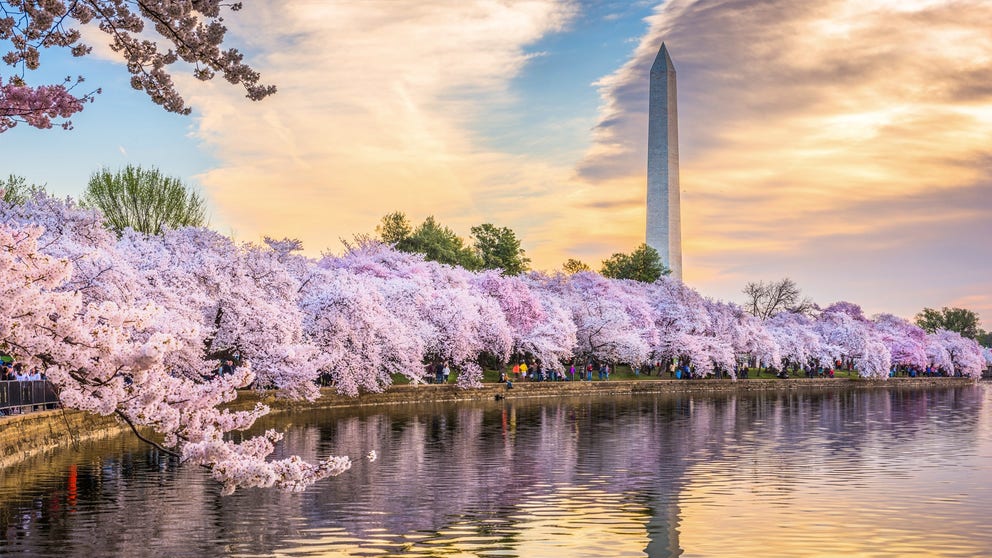Will DC’s cherry blossoms bloom early and break the record?
Temperature plays a key role in determining when the cherry trees bloom. The earliest peak bloom was recorded on March 15, 1990 due to “extraordinary" warm temperatures, according to the National Park Service.
Cherry blossoms showing early signs of life in Washington D.C.
The Cherry Blossom Indicator Tree that reliably blooms ahead of the other cherry blossoms around D.C.'s Tidal Basin is starting to bud. Mike Litterst, Chief of Communications for National Mall and Memorial Parks, joined FOX Weather to talk about what this could mean for the upcoming season.
The nation’s capital is seeing signs of a possible early bloom for its world-renowned cherry blossoms.
Cherry blossoms and the variety of cherry tree species they grace have grown in Washington, D.C. for over 100 years. Originally from Japan, the trees were gifted to the U.S. government as a sign of friendship between the two nations.
HOW DC’S CHERRY BLOSSOMS ARE A LIVING VALENTINE FROM JAPAN
An early start for the indicator tree

People take selfies in front of the "indicator tree" which bears cherry blossoms in full bloom at the Tidal Basin in Washington, DC March 27, 2019.
(EVA HAMBACH / AFP / Getty Images)
Since they were given to the U.S., the trees have become a signature part of D.C., famously adorning the National Mall. Plus, their floral blooms signal the coming of spring.
This year, however, that signal may be coming sooner than usual. The indicator tree, which is a Yoshino cherry tree that blooms about 7-10 days before most of the other cherry trees, has already begun to bloom.
According to National Mall spokesperson Mike Litterst, the bloom cycle of the indicator tree is running about two weeks ahead of where it was last year.
"We have had one of the warmest winters on record," Litterst said. "So, we are well into spring, and the flowering trees around the National Mall are telling us that."
CENTURY-OLD RECORDS COULD FALL AS HISTORIC FEBRUARY WARMTH MOVES INTO EASTERN US
How temperature impacts the cherry blossoms bloom cycle

Sunrise kisses cherry blossoms, with the Jefferson Memorial in the background.
(Steve Piacente / National Cherry Blossom Festival / FOX Weather)
The cherry trees, Litterst noted, are phenological or driven by heat. This means if warm temperatures occur during their bloom cycle, the cycle will begin sooner or progress more quickly. On the flip side, if cooler temperatures occur, the bloom cycle may be delayed or progress more slowly.
According to the National Park Service, which takes care of the cherry trees, the trees go through six stages in their bloom cycle:
- Green Buds
- Florets Visible
- Extension of Florets
- Peduncle Elongation
- Puffy White
- Peak Bloom
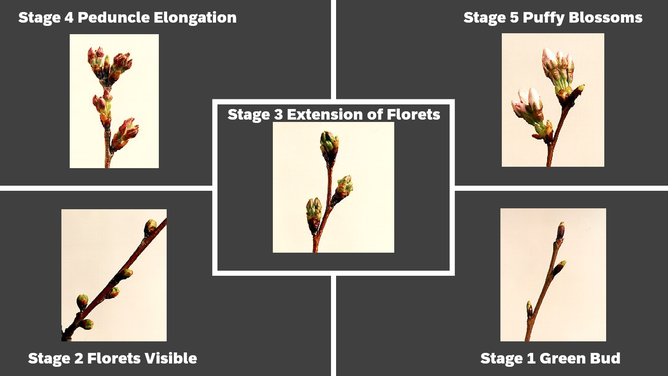
Starting in the lower right corner, here are the first five stages of the Yoshino cherry tree bloom cycle.
(National Park Service / FOX Weather)
In some years, Litterst said warm conditions caused the trees to progress from stage five or "Puffy White" to stage six or "Peak Bloom" in just two days. In other years, however, different conditions caused the trees to take a week or more to make the same progress.
When peak cherry blossom bloom happens
Peak bloom is defined as the day when 70% of the blossoms on the Yoshino Cherry trees, one of the most common species of cherry trees in the nation’s capital, are open. According to the NPS, peak bloom typically occurs between the last week of March and the first week of April.
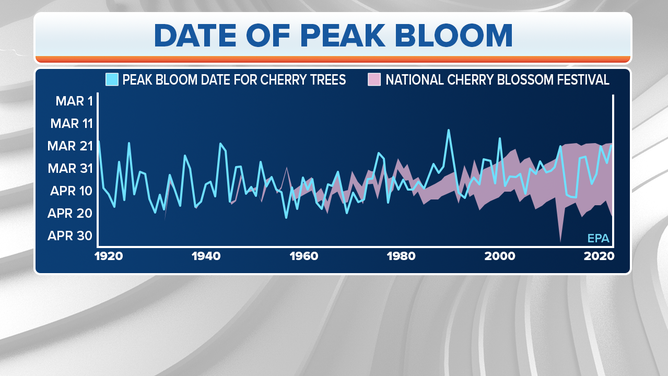
Graph showing dates of peak bloom of DC's cherry trees historically
(Environmental Protection Agency / FOX Weather)
Given that the indicator tree began stage one of its bloom cycle on February 13, an early peak bloom may be in the forecast for the capital’s cherry blossoms this year.
The earliest peak bloom was recorded on March 15, 1990, due to "extraordinary" warm temperatures, said the NPS. They also noted that the latest peak bloom was recorded on April 8, 1958, due to "extraordinary" cool temperatures.
How long the cherry blossoms will last
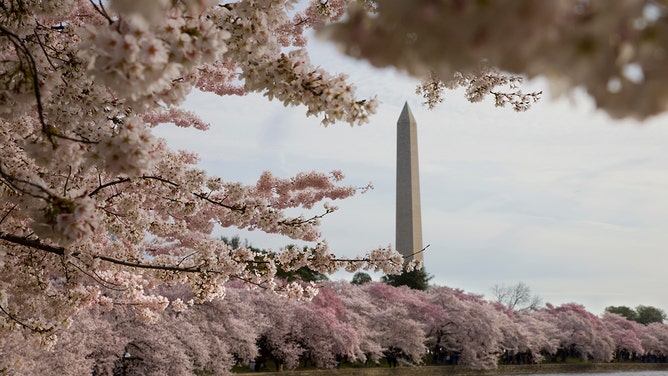
The Washington Monument peeks through the annual cherry blossoms in bloom along the Tidal Basin in Washington, D.C.
(Brooks Kraft LLC / Corbis / Getty Images)
The length of peak blooms for Yoshino trees usually lasts several days. Much like the bloom cycles, however, the length of this blooming period varies depending on the weather. According to the NPS, cool, calm weather can extend the blooming period, whereas a rainy, windy day can quickly destroy the blossoms.
Visitors hoping to get a peek of the peak bloom this year will need to stay tuned for the Peak Bloom Projection on March 1. According to Litterst, NPS will announce when they believe the peak bloom for the cherry blossoms will occur this year.
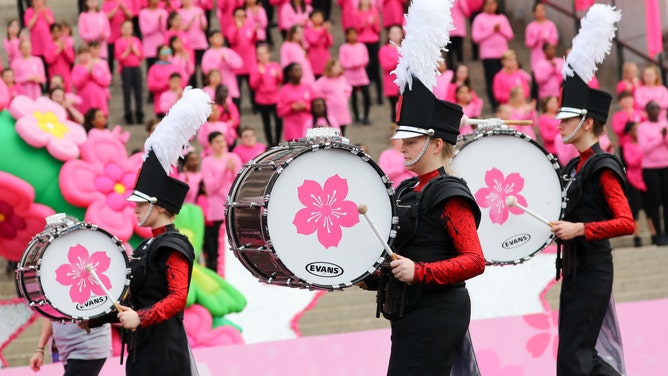
Drummers in the marching band during a past National Cherry Blossom Festival parade.
(Doug Van Sant / National Cherry Blossom Festival / FOX Weather)
No matter the peak bloom date, the city’s annual National Cherry Blossom Festival is scheduled to occur between March 20 and April 16. For those unable to see the cherry trees in person, the trees can be watched live 24/7 virtually.
How Washington, DC got its famous cherry blossom trees
In 1912, Japan gifted 3,000 flowering cherry trees to Washington, DC. Today, the National Cherry Blossom Festival honors that gift of friendship.

